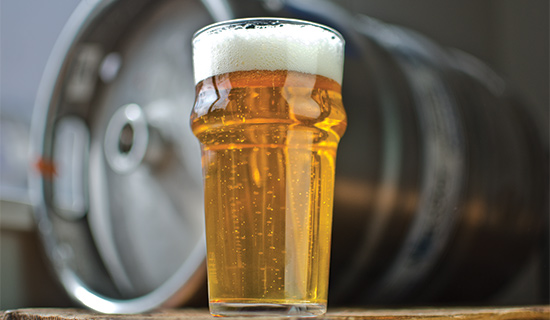How To Clean Draft Beer System
Clean beer lines are integral to maintaining the quality of craft beer.
Small and independent craft brewers devote a lot of time, effort and resources to make the best possible beer for consumers. Ingredients are handpicked, the latest technological advances in brewing are used and batches of beer are tested throughout the process to ensure superior quality. That hard work can be ruined in the time it takes the beer to travel from the keg to the glass if the draught system/lines have not been properly cleaned and maintained.
The enemies of draught beer may include the following:
Yeast
White or grey-colored surface growth found on beer system components (faucets, keg couplers and drains) that are exposed to air.
Mold
Brown or black-colored surface growth found on beer system components (faucets, keg couplers and drains) that are exposed.
Beer stone
Grey or brown in color, (calcium oxalate) builds up and eventually flakes off if the system is not properly maintained, potentially ending up in the pint and having a negative effect on taste.
Bacteria
Beer-spoiling bacteria will ruin a beer's flavor and aroma. While these micro-organisms are not health risks, they will cause buttery off-flavors called diacetyl, or sour, vinegary off-flavors called acetic acid.
All of these enemies of beer are easily preventable by regular line cleaning, but if left unattended will inevitably lead to dissatisfied customers and lost sales.

Cleaning Lines and General Maintenance
Here are BA-defined minimum standards for draught cleanliness:
- At a minimum, you should clean your draught line every two weeks with an alkaline detergent cleaner to remove protein and films that build up quickly.
- The cleaning chemical should be recirculated through the product line for a minimum of 15 minutes at a velocity up to two gallons/minute. Soaking product lines is not recommended, but the cleaning solution should be left in-line for at least 20 minutes if recirculation is not an option.
- All faucets should be completely disassembled and cleaned every two weeks. Make sure to replace any damaged seals or gaskets.
- Acid cleaning should be performed quarterly to remove inorganic compounds such as "beer stone," which are mineral deposits.
- All vinyl jumpers and vinyl direct draw lines should be replaced annually.
- Couplers should be replaced based on condition. Inspect the coupler bottom seal and O-rings, to make sure they are properly lubricated with a food-grade lubricant.
- Good quality, well-maintained couplers, faucets and shanks can last a lifetime. Parts that are 100 percent stainless steel are the most reliable and will provide the best quality experience for your staff and customers.
- Always make sure to rinse lines with clean water after cleaning!
- Draught lines may need to be replaced after pouring root beer, fruit or pepper-flavored beers, sour beers, margaritas or ciders in order to avoid permanent flavor influence.
Safety First
Use of personal protective equipment (eye/face protection and gloves) should be required while handling line-cleaning chemicals.
Properly cleaned lines will ensure that the appearance, aroma and flavor experience is delivered pint after pint—and your customers will keep coming back.
This article was written by the market development committee as part of the BA Insider—a free email publication sent quarterly by the Brewers Association. Each issue covers topics relevant to craft beer distributors.
How To Clean Draft Beer System
Source: https://www.brewersassociation.org/association-news/importance-draught-beer-line-cleaning/
Posted by: blessingpristor.blogspot.com

0 Response to "How To Clean Draft Beer System"
Post a Comment